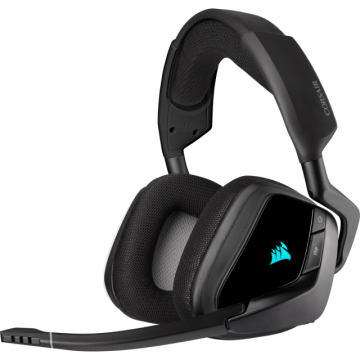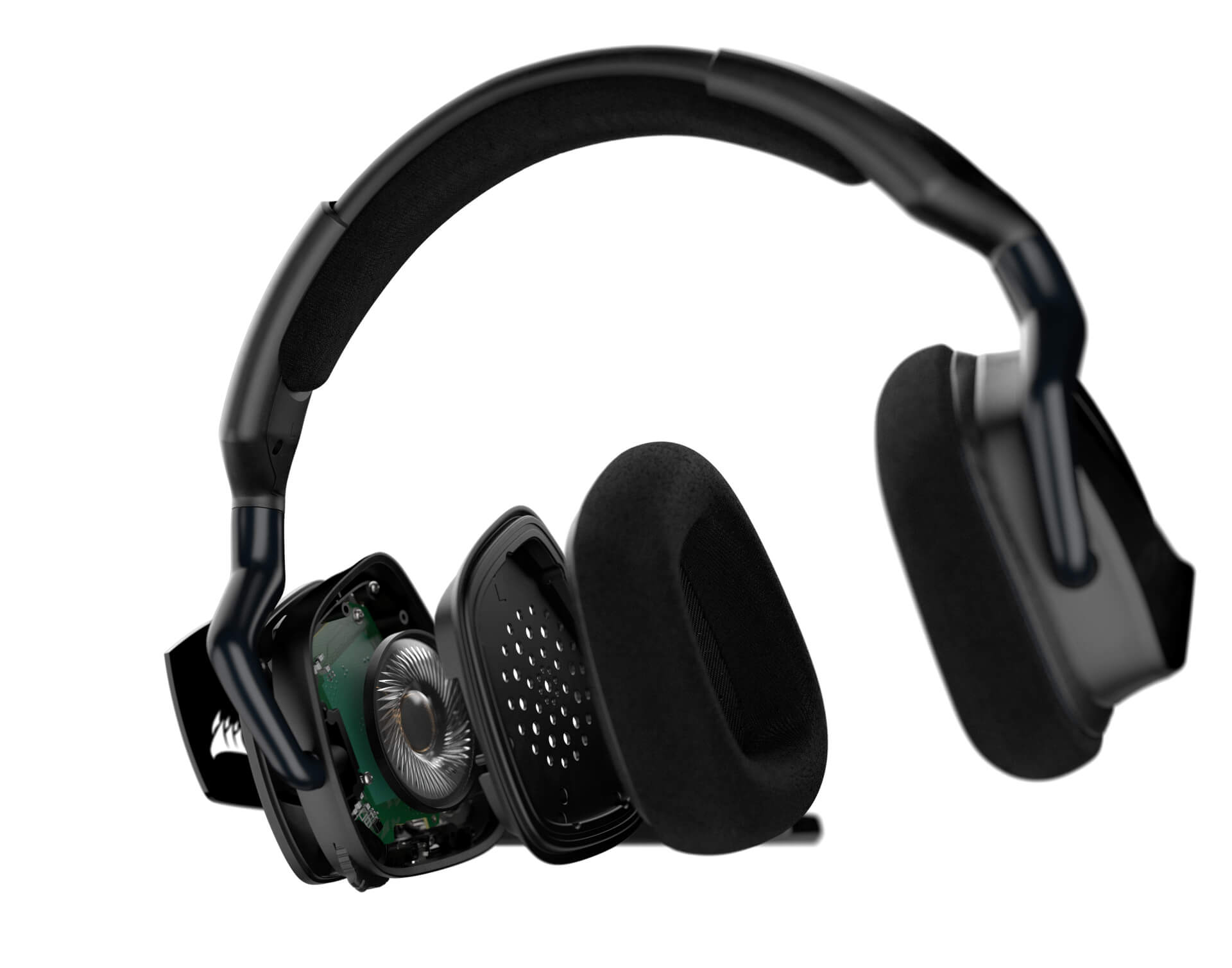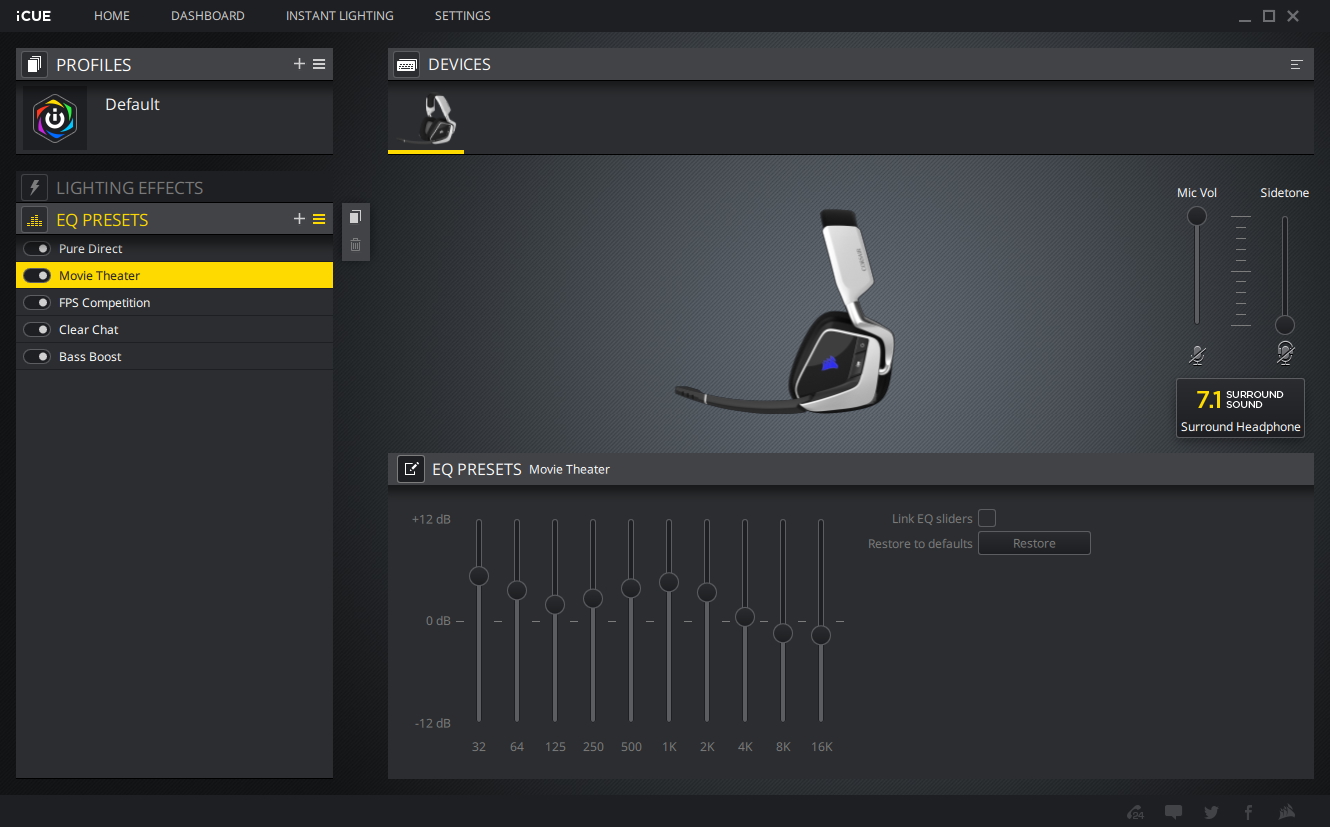Finding a good pair of headphones isn’t difficult. For most of the big name players in the space, it’s a given that their headsets will at least sound good. You can kind of blindly grab at the shelf and end up with a solid overall audio experience. The trick is finding a pair that matches whatever your other needs might be and still fits your budget.
In my case, I’ve found that most gaming headsets aren’t built for my kind of abuse. You’re supposed to use these things occasionally for leisure, not for 16 hours a day while you’re grinding on guides or review code. I’ve burned out a lot of expensive headphones on this gig.
The last pair of headphones I had that actually managed to stand up to my challenge was a wired Corsair Void. Four years on, they still sounded great and worked flawlessly, albeit with a little understandable wear and tear. With that in mind, I had high expectations for Corsair’s Void RGB Elite.
In general, it lived up to them. The Void RGB Elite is a durably made, great-sounding wireless headset with a solid range and decent battery life. It works right out of the box without a problem and can be used for both PCs and PlayStation 4. However, it’s also the rare product I’ve seen lately where installing its companion application actually makes the overall experience a little worse for it.
The wireless Elite is unusual among the headsets I’ve tested lately in that it’s only wireless. It comes with a USB cable, but it’s strictly for charging the headset; there’s no option to use a second cable as a wired hookup. It’s easy to use just the same, however. Just plug in the USB dongle, wait a few seconds for initial device installation, and enjoy your new headphones.
It does fit loosely on the head, so fans of tighter headphones need not apply, but the wireless Elite is lightweight and well-padded, with breathable microfiber covering memory foam on its cups. It’s better-suited to long sessions than a lot of headsets I’ve used, and doesn’t get anywhere near as warm.
I also like its construction. The headset’s wiring is housed in big aluminum yokes that connect the headband to the cups, and the motion of the joints is minimal. It feels like it was made to last, with lots of reinforcement on the most typical points of wear.
The wireless Elite has a simple flip-up mute on its mic, alongside a mute switch on the left cup. One of my few complaints about my older Void was that it had a mute switch in an inconvenient place, where it was easy to hit by mistake as you took off or put on the headset; the wireless Elite’s is in the same place, just below its power button, but has a handy LED at the end of the mic as well as a warning tone that tells you whether or not the mic can transmit.
I tested the wireless Elite’s transmission distance, and found it works well enough up to about the advertised 40 feet (12 meters). What surprised me was that, for whatever reason, it copes better with obstacles than the other products I’ve reviewed lately. Other wireless headsets can have trouble with transmitting through walls, windows, or doors, but the Elite worked perfectly at maximum range from outside the house I was in. I did find that the battery length was a bit shorter than advertised, lasting 12 hours rather than 16, but that’s hardly a deal-breaker.
So far, so good. At $99.99, the Void RGB Elite is only twenty bucks more than the wired Void, delivers comparable audio, and provides a solid audio experience with strong wireless functionality. It’s a little loose on your head and there’s no wired option, but all in all, it offers a lot of value for its price.
Going over its specs, I noticed that the wireless Elite is compatible with Corsair’s iCUE, a fairly typical sort of device manager that lets you customize your headset’s performance. (I probably would’ve noticed this earlier if I’d read the manual more closely, but what can you do.)
You don’t need it, but iCUE is required to activate some of the wireless Elite’s higher-end features such as equalizer settings. If you’re looking to crawl up into the guts of the headset for maximum per-game performance, you need iCUE to do it.
iCUE also lets you use several other options, such as customizing the color and strobe frequency of the lights on the wireless Elite’s sides, checking its charge time, and turning on automatic shutdown. Having iCUE running means that it gets a weird Cortana-but-tranquilized female announcer, to tell you when the mic is on or off, the unit is shutting down, or other potentially relevant details.
There are a couple of useful options with iCUE, like being able to set up specific audio profiles for your current activity or game, but I found that a lot of its options worked strangely if at all. A particular offender was the automatic shutdown feature, which didn’t seem to have an obvious trigger for when it would begin. I’d get a sonorous announcement that “shutdown will begin” in the middle of… listening to music, which would abort a few seconds later without purpose.
The ability to change the lighting profile also lets you turn the decals on the sides to different colors and make them flash in a variety of different patterns. It’s a cute option, I suppose, but I’d be a little more in favor of it if the decals weren’t specifically shaped like the Corsair logo. It’s a feature that seems to be designed for esports pros with Corsair sponsorships, and adds little value for anyone else.
In general, iCUE seems to add a number of options that range from questionable to useless to actively detrimental, and you’d do better to not use it at all.
Without the application, the Void RGB Elite does have a fair bit going for it. It’s inexpensive for wireless headphones, sounds good, and is built tough, from a company that I’ve found to have a track record for long-lasting products.
The fit’s loose, the lack of a wired option’s kind of a pain, and the attached application isn’t worth the hassle, but for day-to-day use, I don’t have any serious complaints with the Elite. The real test, of course, will be if it still works in a couple of years.
Pros:
- Built to last.
- It copes better with obstacles than a couple of other wireless headsets I’ve used lately. The signal stays just as strong if there are a couple of doors or walls between the headset and transmitter.
- At $99.99, it’s one of the cheaper wireless headsets on the market, but doesn’t sacrifice performance or comfort for it.
- Comfortable, with breathable padding on the cups.
Cons:
- USB only, with no wired option. The charge cable isn’t actually a connector, so you need to plug in the transmitter to use it at all.
- The companion app, while unnecessary and nearly unadvertised, actually makes the overall product a little worse by enabling an auto-shutdown option that doesn’t seem to actually work.
- A significantly shorter battery life than many competing products. It advertises 16, but is closer to 12, especially if you customize the lighting.
- Fits very loosely on the head.
Void RGB Elite Specs
Headphone Frequency Response: 20-30,000 KHz
Impedance: 32 Ohms @ 1 kHz
Connector: USB Type A
Speaker Size: 50mm neodymium
Microphone: Omni-directional
Ear Cushion: Enclosed
Ear Cushion Fabric: Microfiber over memory foam
Audio Connection 3.5mm: None
Audio Connection USB: PC, PlayStation 4
Audio Misc. Hi-Res Audio
Design Misc. Flip-up mic mute, LED mute indicator, dynamic lighting on ear cups, on-ear volume and mute
Battery Life: 12-16 hrs.
Wireless Distance: 45 ft.
Headset Weight: 9 ounces (9.7 with microphone)
[Note: Corsair provided a Void RGB Elite retail unit for the purposes of this review.]









Published: Nov 26, 2019 09:16 pm